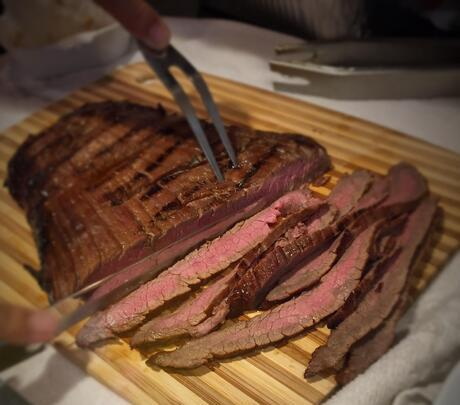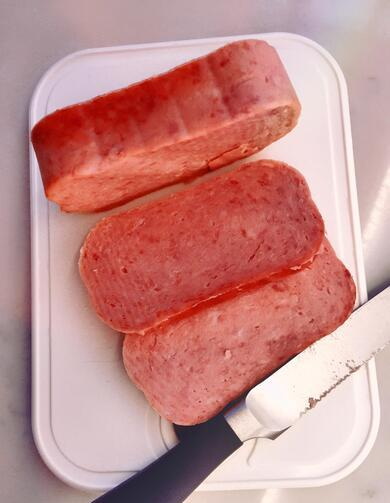

Views: 500 Author: sales@insightknife.com.cn Publish Time: 2025-01-07 Origin: Site








Content Menu
>> Importance of Sharp Steak Knives
● Tools for Sharpening Steak Knives
>> Whetstone
>> Honing Rod
● How to Sharpen Straight-edge Steak Knives
● How to Sharpen Serrated-edge Steak Knives
>> Understanding Serrated Knives
>> Using a Serrated Knife Sharpener
● Maintaining Your Steak Knives
>> Safe Storage
● Frequently Asked Questions regarding Sharpen Steak Knives
>> 1. What is the best angle to sharpen steak knives?
>> 2. How often should I sharpen my steak knives?
>> 3. Can I use a regular kitchen knife sharpener for steak knives?
>> 4. Is it necessary to hone my steak knives regularly?
>> 5. What should I do if my steak knife is chipped?
Sharpening steak knives is an essential skill for anyone who enjoys cooking and dining. A sharp knife not only enhances the dining experience but also ensures safety in the kitchen. This article will guide you through the various methods of sharpening steak knives, the tools required, and tips for maintaining their sharpness. Understanding the importance of knife maintenance can elevate your culinary skills and make meal preparation more enjoyable.
Steak knives come in various types, primarily categorized by their blade edges. The two most common types are straight-edge and serrated-edge knives.
Straight-edge knives have a smooth blade that allows for clean cuts through meat. They are easier to sharpen and maintain, making them a favorite among chefs and home cooks alike. The precision of a straight-edge knife is particularly beneficial when slicing through tender cuts of meat, ensuring that each slice is uniform and aesthetically pleasing.
Serrated-edge knives feature a saw-like blade that grips the meat, making them ideal for cutting through tougher textures. These knives excel at slicing through crusty bread or fibrous meats, where a straight-edge knife might struggle. However, they require a different sharpening technique, as the serrations can be challenging to maintain without the right tools.
Using sharp steak knives is crucial for several reasons. A sharp knife reduces the effort needed to cut through meat, allowing for cleaner slices. This not only enhances the presentation of your dish but also improves the overall dining experience. When guests are served perfectly sliced steak, it elevates the meal and showcases the cook's attention to detail. Additionally, sharp knives are safer; they require less force to cut, reducing the risk of slips and accidents. A dull knife can slip off the meat and cause injuries, making it essential to keep your knives in top condition.

A whetstone is a traditional sharpening tool that consists of a block of stone with different grit levels. It is versatile and can be used for both straight and serrated knives, although the technique varies. Whetstones come in various materials, including natural stones and synthetic options, each offering different benefits. The choice of whetstone can significantly affect the sharpening process, so understanding the characteristics of each type is beneficial for achieving the best results.
A honing rod, often made of steel or ceramic, is used to realign the edge of the knife rather than sharpen it. Regular use of a honing rod can prolong the time between sharpening sessions. It is important to note that honing does not remove material from the blade; instead, it helps maintain the knife's edge by straightening any microscopic bends that occur during use. Incorporating honing into your knife maintenance routine can keep your knives performing optimally.
Electric sharpeners are convenient and easy to use, making them a popular choice for many home cooks. They can quickly sharpen both straight and serrated knives, but care must be taken to avoid over-sharpening. While electric sharpeners offer speed and efficiency, they may not provide the same level of precision as manual methods. Understanding how to use these devices properly can help you achieve the best results without compromising the integrity of your knives.
Manual sharpeners are compact and user-friendly. They often have preset angles to guide the sharpening process, making them suitable for beginners. These sharpeners can be a great introduction to knife maintenance, allowing users to learn the basics of sharpening without the complexity of using a whetstone. However, it is essential to choose a high-quality manual sharpener to ensure effective results.

Before sharpening, ensure the knife is clean and dry. This prevents any debris from scratching the blade during the sharpening process. A clean knife also allows for a more accurate assessment of the blade's condition, helping you determine how much sharpening is needed. Taking the time to prepare your knife properly can lead to better results and a more enjoyable sharpening experience.
Choose the Right Grit: Start with a coarse grit (around 1000) for dull knives and finish with a finer grit (3000-6000) for polishing. The progression from coarse to fine grit allows you to remove material efficiently while refining the edge for a sharp finish.
Soak the Whetstone: If using a water stone, soak it in water for about 10-15 minutes. This helps to create a slurry that aids in the sharpening process, providing lubrication and preventing the blade from overheating.
Angle the Knife: Hold the knife at a 20-degree angle against the stone. Maintaining a consistent angle is crucial for achieving a sharp edge, as varying the angle can lead to uneven sharpening.
Sharpen the Blade: Push the blade across the stone in a sweeping motion, applying light pressure. Repeat this process on both sides of the blade, alternating sides after several strokes. The goal is to create a uniform edge, so take your time and focus on technique.
Check the Sharpness: Test the knife on a piece of paper or a tomato. If it cuts cleanly, you’re done. If not, continue sharpening. Regularly checking the sharpness during the process can help you avoid over-sharpening and ensure that you achieve the desired level of sharpness.
Position the Rod: Hold the honing rod vertically with the tip resting on a stable surface. This position provides stability and allows for better control during the honing process.
Angle the Knife: Hold the knife at a 20-degree angle against the rod. Similar to sharpening, maintaining the correct angle is essential for effective honing.
Hone the Blade: Draw the knife down the rod, applying light pressure. Repeat this process on both sides of the blade. Regular honing can significantly extend the life of your knife, making it an essential part of your knife maintenance routine.

Serrated knives have a unique edge that requires a different sharpening approach. The goal is to sharpen each serration individually without damaging the blade. Understanding the structure of a serrated knife is crucial; the tips of the serrations do the cutting, so focusing on these areas during sharpening is essential for maintaining the knife's effectiveness.
Select the Right Tool: Use a tapered round file or a specialized serrated knife sharpener. These tools are designed to fit into the serrations and sharpen them effectively.
Align the Sharpener: Insert the sharpener into one of the serrations, ensuring it fits snugly. This alignment is critical for achieving a sharp edge without damaging the surrounding areas of the blade.
Sharpen Each Serration: Gently push the sharpener along the serration’s edge, maintaining the original angle. Repeat for each serration along the blade. This method requires patience, as each serration must be sharpened individually to ensure a consistent cutting edge.
Identify the Bevel: Determine the angle of the serrated edge. Understanding the bevel is crucial for effective sharpening, as it guides how you approach the sharpening process.
Sharpen the Tips: Use the corner of the whetstone to sharpen the tips of the serrations, applying light pressure. This technique allows you to focus on the cutting points without altering the overall shape of the blade.
Polish the Blade: After sharpening, use the flat side of the whetstone to polish the blade gently. This step helps to refine the edge and improve the knife's overall performance.
To keep your steak knives sharp, hone them regularly. This realigns the edge and prevents the need for frequent sharpening. Incorporating honing into your routine can save time and effort in the long run, ensuring that your knives are always ready for use.
Always clean your knives after use. Avoid putting them in the dishwasher, as the heat and moisture can damage the blade. Instead, wash them by hand with mild soap and dry them immediately. Proper cleaning not only maintains the knife's appearance but also prevents rust and corrosion, extending its lifespan.
Store your steak knives in a knife block, magnetic strip, or protective sheaths. This prevents the blades from dulling and protects you from accidental cuts. Proper storage is essential for maintaining the integrity of the blade and ensuring that your knives remain in optimal condition.
Consider having your knives professionally sharpened once a year, especially if they are high-quality or frequently used. Professionals can restore the blade to its original sharpness and extend its lifespan. Investing in professional sharpening can be particularly beneficial for those who rely heavily on their knives for cooking, as it ensures that they are always performing at their best.
Sharpening steak knives is a vital skill that enhances your cooking and dining experience. By understanding the different types of knives and the appropriate sharpening techniques, you can maintain your knives in optimal condition. Whether you choose to use a whetstone, honing rod, or electric sharpener, regular maintenance will ensure that your steak knives remain sharp and effective for all your culinary needs. With these tips and techniques, you can enjoy perfectly sliced steaks and a safer kitchen environment, making every meal a delightful experience.
The best angle to sharpen steak knives is typically around 20 degrees. This angle allows for a sharp edge that is effective for slicing through meat while maintaining durability.
The frequency of sharpening steak knives depends on usage. For regular home cooks, sharpening every few months is usually sufficient. However, if you use your knives daily, consider sharpening them every month or as needed.
Yes, you can use a regular kitchen knife sharpener for steak knives, but it is essential to ensure that the sharpener is suitable for the type of blade you have. For serrated knives, a specialized serrated knife sharpener is recommended.
Yes, honing your steak knives regularly is necessary to maintain their sharpness. Honing realigns the edge of the blade, which can help prolong the time between sharpening sessions.
If your steak knife is chipped, it may require professional sharpening to restore its edge. Attempting to sharpen a chipped knife at home can lead to further damage. A professional can assess the damage and sharpen the knife effectively.